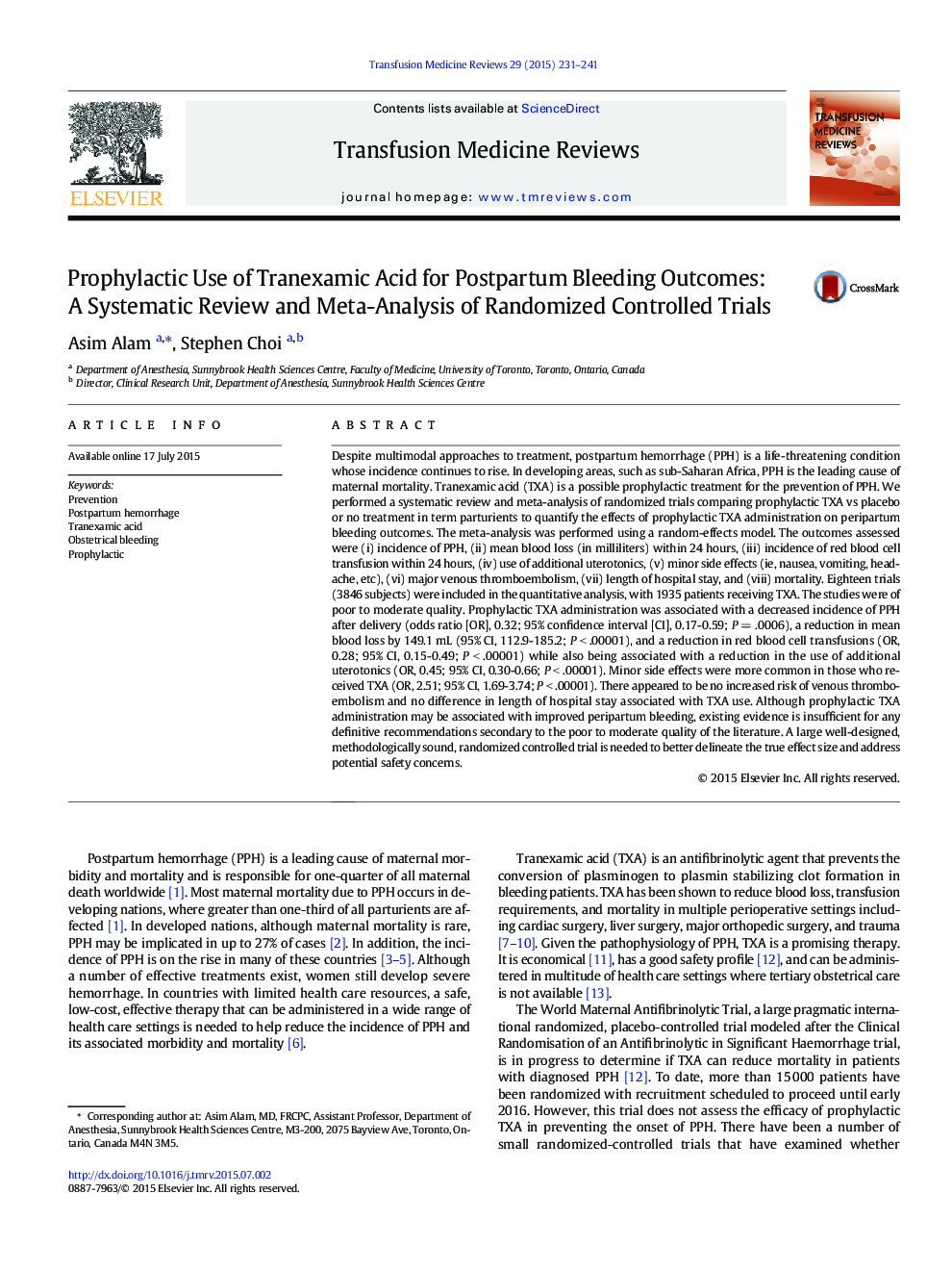| کد مقاله | کد نشریه | سال انتشار | مقاله انگلیسی | نسخه تمام متن |
|---|---|---|---|---|
| 3336487 | 1213607 | 2015 | 11 صفحه PDF | دانلود رایگان |
• We completed a systematic review and meta-analysis of randomized controlled trials that examined the prophylactic use of tranexamic acid (TXA) in the prevention of postpartum hemorrhage.
• The use of TXA may be associated with a reduction in the onset of postpartum hemorrhage, blood loss within 24 hours, need for transfusion, and use of additional uterotonic agents.
• However, the use of TXA may increase the incidence of minor side effects.
• Study designs were of poor to moderate quality and firm recommendations cannot be made.
Despite multimodal approaches to treatment, postpartum hemorrhage (PPH) is a life-threatening condition whose incidence continues to rise. In developing areas, such as sub-Saharan Africa, PPH is the leading cause of maternal mortality. Tranexamic acid (TXA) is a possible prophylactic treatment for the prevention of PPH. We performed a systematic review and meta-analysis of randomized trials comparing prophylactic TXA vs placebo or no treatment in term parturients to quantify the effects of prophylactic TXA administration on peripartum bleeding outcomes. The meta-analysis was performed using a random-effects model. The outcomes assessed were (i) incidence of PPH, (ii) mean blood loss (in milliliters) within 24 hours, (iii) incidence of red blood cell transfusion within 24 hours, (iv) use of additional uterotonics, (v) minor side effects (ie, nausea, vomiting, headache, etc), (vi) major venous thromboembolism, (vii) length of hospital stay, and (viii) mortality. Eighteen trials (3846 subjects) were included in the quantitative analysis, with 1935 patients receiving TXA. The studies were of poor to moderate quality. Prophylactic TXA administration was associated with a decreased incidence of PPH after delivery (odds ratio [OR], 0.32; 95% confidence interval [CI], 0.17-0.59; P = .0006), a reduction in mean blood loss by 149.1 mL (95% CI, 112.9-185.2; P < .00001), and a reduction in red blood cell transfusions (OR, 0.28; 95% CI, 0.15-0.49; P < .00001) while also being associated with a reduction in the use of additional uterotonics (OR, 0.45; 95% CI, 0.30-0.66; P < .00001). Minor side effects were more common in those who received TXA (OR, 2.51; 95% CI, 1.69-3.74; P < .00001). There appeared to be no increased risk of venous thromboembolism and no difference in length of hospital stay associated with TXA use. Although prophylactic TXA administration may be associated with improved peripartum bleeding, existing evidence is insufficient for any definitive recommendations secondary to the poor to moderate quality of the literature. A large well-designed, methodologically sound, randomized controlled trial is needed to better delineate the true effect size and address potential safety concerns.
Journal: Transfusion Medicine Reviews - Volume 29, Issue 4, October 2015, Pages 231–241
